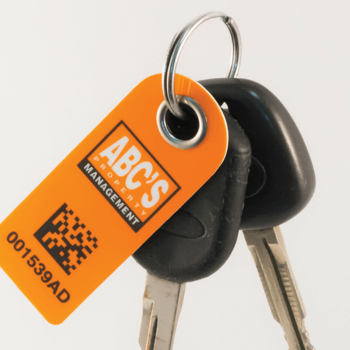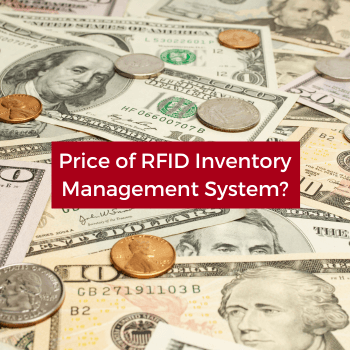What is RFID?
RFID, or radio frequency identification, is a technology that utilizes electromagnetic fields to automatically identify and track tags attached to objects. These tags contain electronically stored information, which can be remotely accessed by RFID readers or antennas without requiring direct line-of-sight. RFID technology is widely used for various applications such as inventory management, asset tracking, access control, and contactless payment systems. It offers advantages over traditional barcode systems, including faster data collection, increased automation, and the ability to read multiple tags at once. RFID technology comes in different frequencies, including low frequency (LF), high-frequency (HF), and ultra-high-frequency (UHF).
These tags contain electronically stored information, which can be remotely accessed by RFID readers or antennas without requiring direct line-of-sight. RFID technology is widely used for various applications such as inventory management, asset tracking, access control, and contactless payment systems. It offers advantages over traditional barcode systems, including faster data collection, increased automation, and the ability to read multiple tags at once. RFID technology comes in different frequencies, including low frequency (LF), high-frequency (HF), and ultra-high-frequency (UHF).
What is RFID inventory management?
An RFID inventory management system utilizes RFID technology to track and manage inventory in real-time. It involves tagging items with RFID tags containing electronically stored information. These tags can then be read wirelessly by RFID readers. These readers capture data about the tagged items' location, movement, and other relevant information without requiring direct line-of-sight or manual scanning. An RFID inventory management system streamlines processes such as stocktaking, replenishment, and order fulfillment by providing accurate, automated tracking capabilities. This technology enhances inventory visibility, reduces errors, minimizes and stockouts. In addition it improves overall operational efficiency in various industries, including retail, logistics, manufacturing, and healthcare.
How accurate is RFID inventory?
RFID inventory management offers a high level of accuracy compared to traditional inventory tracking methods.  With RFID technology, items are tagged with unique identifiers, allowing for precise and automated tracking without manual intervention. This minimizes human error and ensures a high degree of accuracy in inventory counts and location tracking. RFID systems can provide real-time updates on inventory levels, allowing businesses to monitor stock movements with greater precision.
With RFID technology, items are tagged with unique identifiers, allowing for precise and automated tracking without manual intervention. This minimizes human error and ensures a high degree of accuracy in inventory counts and location tracking. RFID systems can provide real-time updates on inventory levels, allowing businesses to monitor stock movements with greater precision.
However, the accuracy of RFID inventory management systems depends of factors such as tag placement, reader configuration, and environmental conditions. Overall, when implemented correctly, RFID inventory management systems can significantly improve accuracy, streamline operations, and reduce inventory discrepancies for business across various industries.
How far away can RFID work?
The range at which RFID technology can work depends on various factors, including the frequency of the RFID system, the type of RFID tag used, and environmental conditions. Generally, passive RFID systems, which rely on power from RFID readers to activate and transmit data, have a shorter range compared to active RFID systems. An active RFID system has their own power source and can transmit data over longer distances. Passive RFID systems typically operate within a range of a few inches to several feet. Active RFID systems can operate at ranges of up to hundreds of feet or even several miles.
However, factors such as interference from metal or other electronic devices, signal strength, and tag orientation can affect the effective range of RFID systems. Overall, RFID technology offers flexibility in range depending on specific application needs, making it suitable for a wide range of tracking and identification purposes.
What actually blocks RFID?
RFID signals can be blocked by various materials and environmental factors. The most common materials that block RFID signals include metals such as aluminum and steel, as well as dense materials like water and carbon fiber. These materials effectively block or reflect RF signals, preventing RFID tags from being read or interfering with the communication between RFID readers and tags.
Additionally, other electronic devices emitting electromagnetic interference (EMI) can disrupt RFID signals, reducing their effectiveness. To ensure reliable RFID communication, it's important to consider the surrounding environment and potential obstacles that may interfere with signal transmission.
How much does an RFID inventory management system cost?
The cost of implementing an RFID inventory management system can vary significantly depending on various factors such as the scale of the operation, the complexity of the system, the type of RFID technology used, and specific business requirements. Generally, the cost includes expenses for RFID tags, readers, antennas, software, installation, and ongoing support and maintenance.
Generally, the cost includes expenses for RFID tags, readers, antennas, software, installation, and ongoing support and maintenance.
It's essential for businesses to conduct a thorough assessment of their requirements, consider potential ROI (return on investment), and consult with RFID solution providers to determine the most cost-effective solution tailored to their needs.
If you would like additional information on RFID inventory management systems please contact one of our RFID specialists at 800-437-5283 or [email protected].
 | About the Author: Aaron HobertAaron Hobert is our RFID Technical Specialist. Hobert joined Metalcraft in September of 1994 as a Litho Press Operator, became the Autograph Team Lead in 1998 and in April 2005 he became the RFID Sales Support Rep. He was named our RFID Technical Specialist in 2008. Aaron lives outside Charles City with his wife Diane. Mobile Phone: 641-330-2660 Email: [email protected] Office: 3360 9th St. SW, Mason City, IA 50401 Office Phone: 641-423-9460 |



